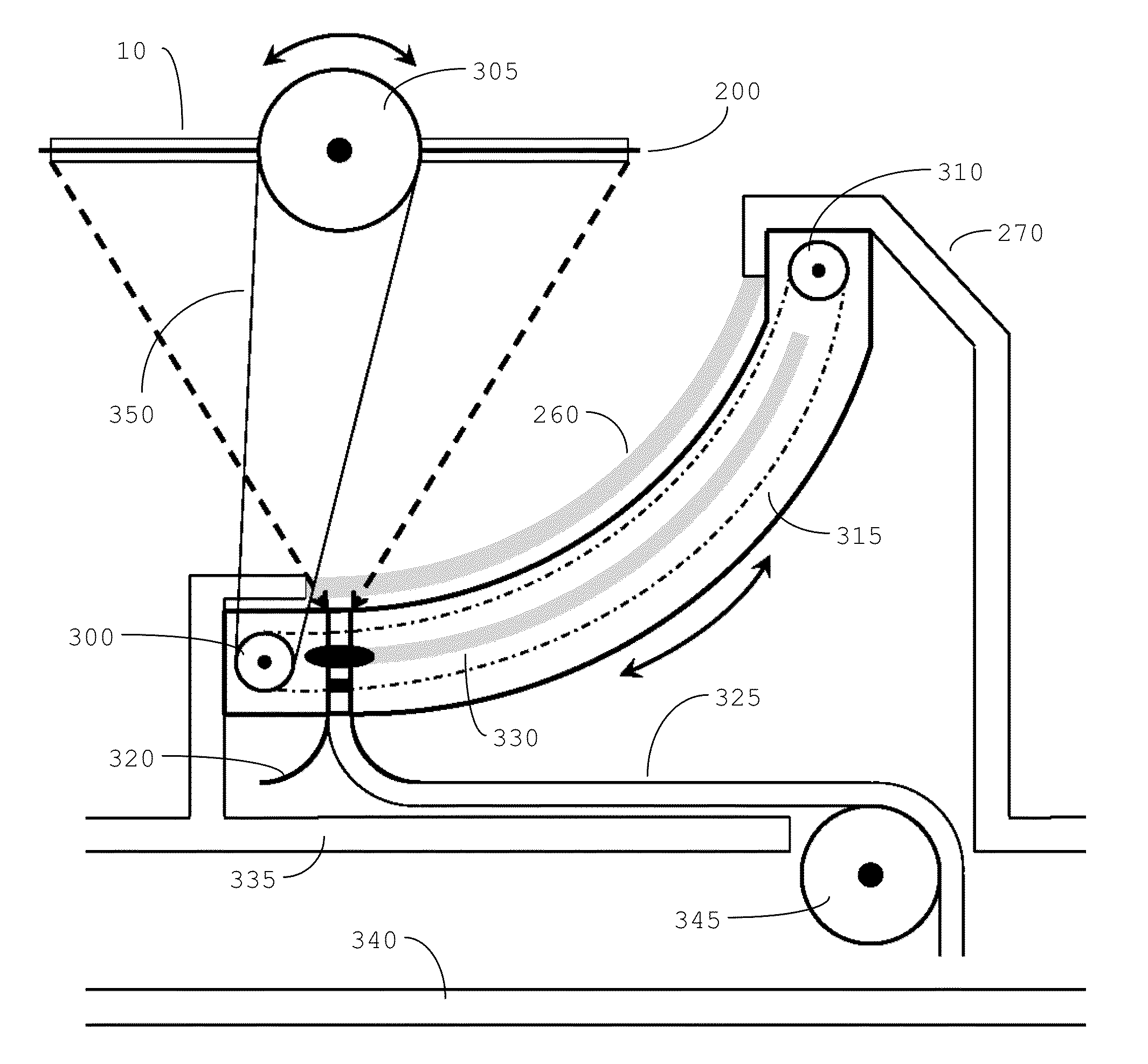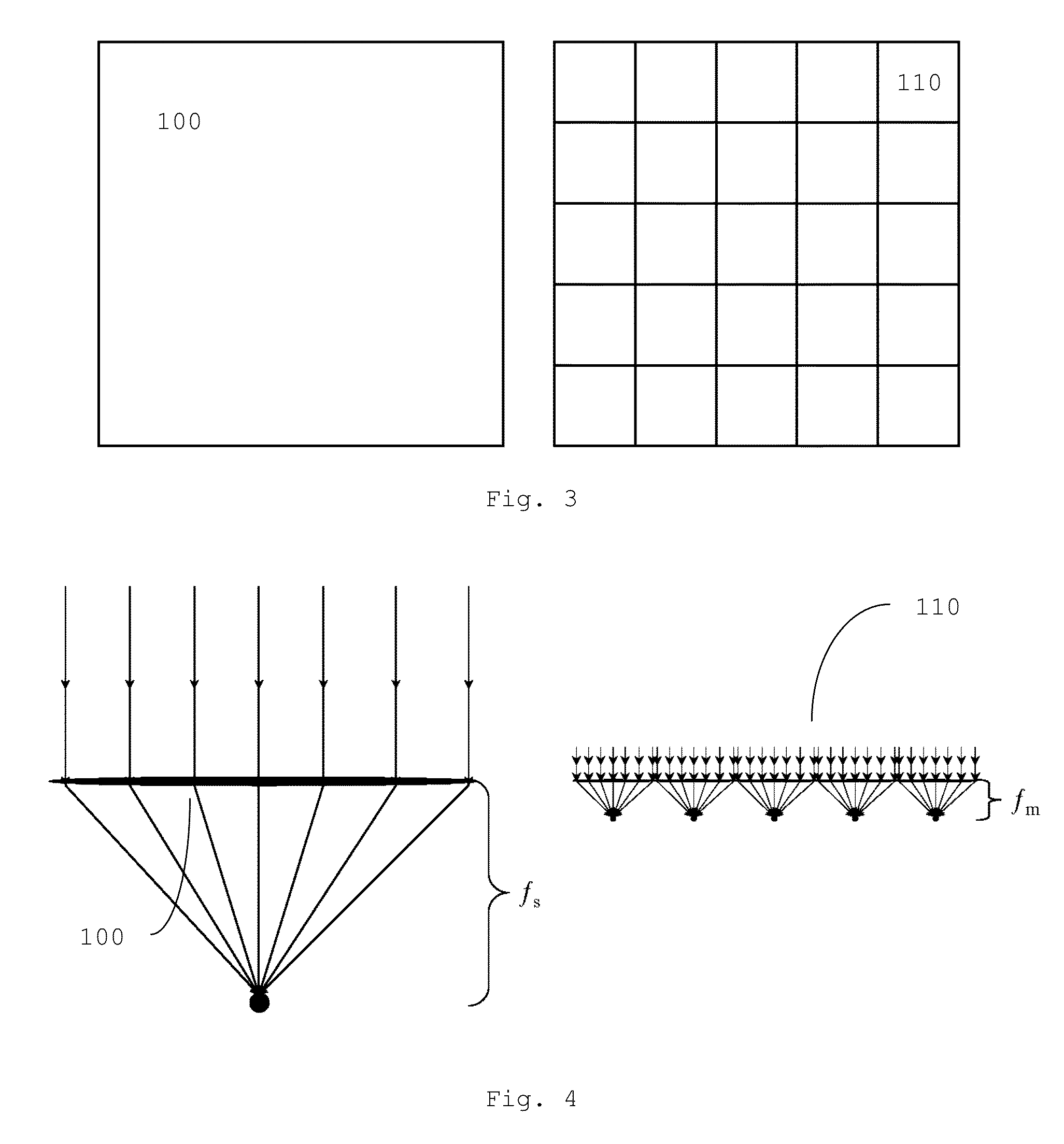Method and apparatus for electricity production by means of solar thermal transformation
a technology of solar thermal transformation and electricity production, applied in the direction of solar heat collectors for particular environments, solar radiation concentration, moving/orienting solar heat collectors, etc., can solve the problems of hot air and rocks as heat conducting and storage medium, cumbersome and inefficient configuration of solar collectors, and inability to meet the needs of electricity production, etc., to achieve short focal lengths
- Summary
- Abstract
- Description
- Claims
- Application Information
AI Technical Summary
Benefits of technology
Problems solved by technology
Method used
Image
Examples
Embodiment Construction
Technical Solutions
[0048]Ground Placement of the Heat Engine
[0049]Systems using parabolic reflectors have a focal point F, where the Stirling engine is placed, situated high above the ground, resulting in many serious disadvantages:[0050]Susceptibility to wind forces requires the systems to interrupt their operation at high wind speeds and move into a horizontal position until wind speed decreases.[0051]The systems can not benefit from storage of thermal energy.[0052]Expensive heavy-duty construction is required.[0053]A high amount of smaller, lighter Stirling engines is required, which significantly increases the overall and maintenance cost.[0054]Further high maintenance costs (e.g. cleaning) are incurred.
In order to keep a heat engine close to the ground, the point F must be lowered, which can be achieved using optical lenses instead of parabolic reflectors.
[0055]Designing a Solar Heat Producing System Using Optical Lenses
[0056]Low weight
[0057]Some of the largest Stirling engines...
PUM
 Login to View More
Login to View More Abstract
Description
Claims
Application Information
 Login to View More
Login to View More - R&D
- Intellectual Property
- Life Sciences
- Materials
- Tech Scout
- Unparalleled Data Quality
- Higher Quality Content
- 60% Fewer Hallucinations
Browse by: Latest US Patents, China's latest patents, Technical Efficacy Thesaurus, Application Domain, Technology Topic, Popular Technical Reports.
© 2025 PatSnap. All rights reserved.Legal|Privacy policy|Modern Slavery Act Transparency Statement|Sitemap|About US| Contact US: help@patsnap.com



